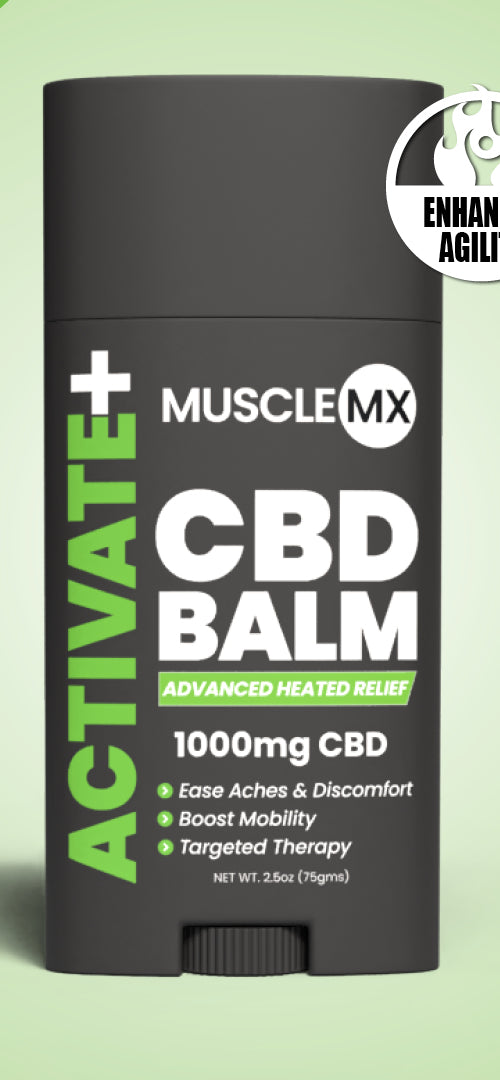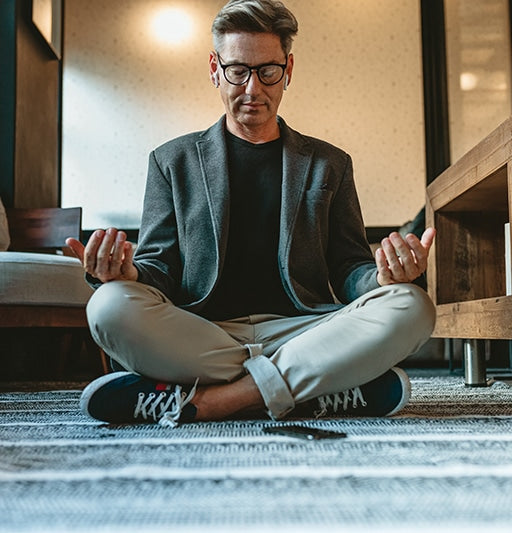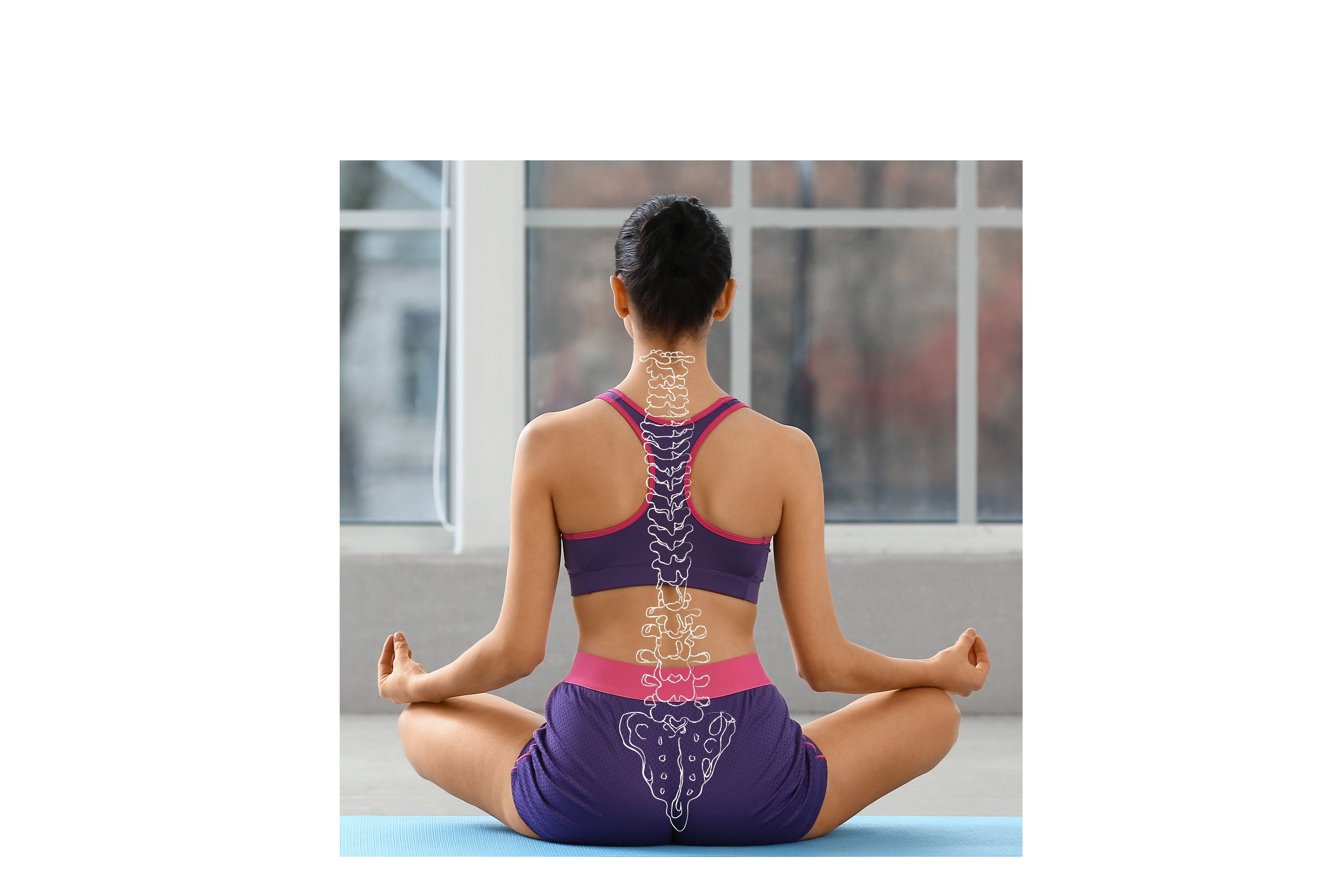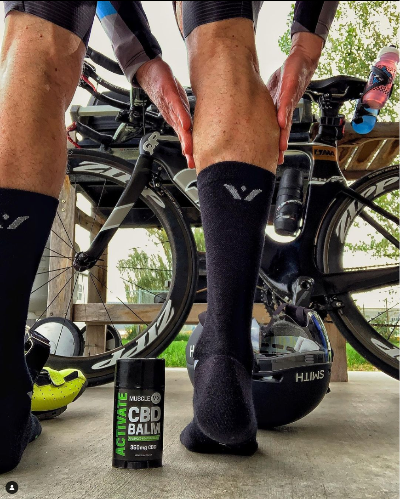Good posture is more than just standing tall—it’s about building a strong, supportive core to prevent slouching and protect your spine. In today’s modern world though, poor posture has become a widespread issue, often a consequence of long hours spent sitting at desks, working on computers, or staring at our phones. Over time, this can lead to slouching, back pain, and overall discomfort. Strengthening your core is essential for supporting your spine, preventing slouching, and improving your posture. A strong core not only contributes to a healthy spine but also enhances balance, stability, and overall physical well-being.
So, if you’re ready then to boost your posture and strengthen your core, we’ll offer up some ways for you to be able to do just that.
Everything You Need to Know About the Human Spine
The spine, also known as the “vertebral column”, is a complex and essential part of the human body. It’s made up of 33 vertebrae stacked on top of each other, providing the main support for your body, allowing you to stand upright, bend, and twist. The spine protects the spinal cord, a critical part of the central nervous system, which relays messages between the brain and the rest of the body.
The spine is divided into five regions:
-
Cervical spine (neck) – supports the head and allows for a wide range of motion.
-
Thoracic spine (upper back) – attached to the ribs, providing stability and protecting vital organs.
-
Lumbar spine (lower back) – bears most of the body's weight, making it more prone to injury.
-
Sacrum – a triangular bone at the base of the spine that connects to the pelvis.
-
Coccyx (tailbone) – the small bone at the very end of the spine, which provides minor support for sitting.
Together, these curves form an "S" shape, which is crucial for good posture. Supporting the spine are muscles, ligaments, and tendons that work together to maintain its alignment and absorb shock from movement. However, the key to good spine health is a strong and stable core.
The study of the human spine has also evolved significantly over time, reflecting broader advancements in medicine, anatomy, and technology.
The advent of X-rays (discovered by Wilhelm Conrad Roentgen in 1895) revolutionized the study of the spine by allowing for non-invasive internal examination. This period also saw the emergence of orthopedic medicine and the development of spinal surgery techniques.
Advances during the 20th Century in medical imaging, including MRI (Magnetic Resonance Imaging) and CT (Computed Tomography) scans, provided detailed views of spinal structures. Research during this time focused on spinal diseases, such as scoliosis and disc herniation, and improved surgical techniques.
Today, the study of the spine has integrated cutting-edge technologies such as 3D imaging, robotic-assisted surgery, and regenerative medicine techniques. Research continues on spinal biomechanics, degenerative diseases, and treatments.
Why is it So Important to Properly Support Your Spine and Avoid Slouching?
Your spine’s alignment has a significant impact on your overall posture and health. When the spine is properly aligned, the body moves efficiently, minimizing wear and tear on muscles, joints, and ligaments. Poor posture, on the other hand, can lead to a host of problems, including back pain, neck strain, reduced mobility, and even respiratory issues due to compressed lungs.
Slouching, one of the most common posture issues, occurs when the shoulders and upper back curve forward, putting extra strain on the spine. Over time, this can weaken the muscles responsible for maintaining proper posture, leading to chronic discomfort and increased risk of injury.
Common Issues Related to Poor Posture
Poor posture doesn’t just affect how you look; it can lead to serious physical issues. Some of the most common problems related to bad posture include:
-
Neck pain: Constant slouching forces the muscles and ligaments in your neck to overwork, causing pain and stiffness.
-
Back pain: Slouching strains the muscles and ligaments supporting your spine, which can cause long-term back pain.
-
Digestive issues: A hunched posture can compress your organs, leading to problems with digestion.
-
Reduced lung capacity: Slouching reduces your lung capacity, leading to shallow breathing and less oxygen intake.
Benefits of Supporting Your Spine with Core Strength
By strengthening the core, you give your spine the support it needs to stay aligned and reduce the likelihood of slouching. Not only that but:
-
Prevents Back Pain: A strong core stabilizes the spine, preventing strain and pain.
-
Improves Balance: Core muscles help maintain balance and stability, reducing the risk of falls.
-
Enhances Athletic Performance: Core strength boosts overall performance in sports and fitness activities.
-
Promotes Better Breathing: Proper posture allows the lungs to expand fully, improving respiratory function.
Exercises to Help Strengthen Your Core for Better Posture
Neglecting your spine can lead to muscle imbalances, joint issues, and chronic pain, which is why it’s essential to take steps to strengthen your core and maintain proper posture. So, here are ten exercises specifically designed to target your core and promote better posture. Remember to maintain proper form and control throughout each exercise to get the maximum benefit.
Exercise #1: Plank
The plank is a fundamental exercise for building core stability. It engages your abdominals, back, and shoulders while also promoting proper spinal alignment.
How To Do It: Start by positioning yourself face down on the floor, resting on your forearms and toes. Keep your body in a straight line from head to heels, ensuring that your hips don’t sag or lift too high. Hold this position for 30 seconds to 1 minute, gradually increasing the duration as your strength improves.
Exercise #2: Dead Bug
The dead bug exercise is excellent for improving core stability and reinforcing the spine’s neutral position.
How To Do It: Lie on your back with your arms extended toward the ceiling and knees bent at a 90-degree angle. Slowly lower one arm behind you while simultaneously extending the opposite leg toward the floor, keeping your lower back pressed into the mat. Return to the starting position and repeat on the other side.
Exercise #3: Bird Dog
This exercise enhances balance, coordination, and core strength while stabilizing the lower back.
How To Do It: Start on all fours with your hands directly under your shoulders and knees under your hips. Extend one arm forward and the opposite leg back, keeping your core engaged and spine neutral. Hold for a few seconds before returning to the starting position and switching sides.
Exercise #4: Glute Bridge
The glute bridge targets the lower back, glutes, and core, helping to improve hip stability and posture.
How To Do It: Lie on your back with your knees bent and feet flat on the floor. Press your heels into the floor and lift your hips until your body forms a straight line from your shoulders to your knees. Hold for a few seconds before lowering your hips back down.
Exercise #5: Side Plank
The side plank strengthens the oblique muscles, which are crucial for lateral stability and proper spinal alignment.
How To Do It: Lie on your side with your legs stacked and elbow directly beneath your shoulder. Lift your hips off the floor, creating a straight line from head to feet. Hold for 30 seconds, then switch sides.
Exercise #6: Superman
The superman exercise strengthens the muscles in your lower back, which are essential for maintaining good posture.
How To Do It: Lie face down on the floor with your arms extended in front of you. Lift your arms, chest, and legs off the floor simultaneously, holding the position for a few seconds before lowering back down.
Exercise #7: Hollow Body Hold
This is a challenging core exercise that engages your entire midsection while encouraging spinal alignment.
How To Do It: Lie on your back with your arms extended overhead and legs straight. Lift your legs and shoulders off the floor, keeping your lower back pressed into the mat. Hold this position for 20 to 30 seconds.
Exercise #8: Russian Twists
Russian twists are a great exercise for strengthening the oblique muscles and improving rotational stability.
How To Do It: Sit on the floor with your knees bent and feet lifted slightly off the ground. Lean back slightly and twist your torso to one side, touching the floor with your hands. Twist to the other side and repeat.
Exercise #9: Reverse Crunch
The reverse crunch focuses on the lower abdominals and helps reduce strain on the lower back.
How To Do It: Lie on your back with your hands by your sides and legs lifted off the floor. Pull your knees toward your chest while lifting your hips off the floor. Slowly lower back down and repeat.
Exercise #10: Pilates Roll-Up
This classic Pilates move stretches and strengthens the core, promoting flexibility and spinal mobility.
How To Do It: Lie on your back with your arms extended overhead. Slowly roll up to a seated position, reaching for your toes, then slowly roll back down, controlling the movement with your core muscles.
Exercise #11: Cat-Cow Stretch
This dynamic stretch improves flexibility in your spine and engages your core muscles.
How To Do It: Start on your hands and knees. Arch your back (like a cat) by pulling your belly button towards your spine, then lower your back (like a cow) by lifting your head and tailbone. Repeat several times.
Exercise #12: Standing March
Standing marches activate your hip flexors and core muscles, improving posture and balance.
How To Do It: Stand tall with your feet shoulder-width apart. Slowly lift one knee towards your chest while engaging your core. Lower it back down and switch sides.
Exercise #13: Seated Leg Lifts
Seated leg lifts engage your lower abs and improve overall core strength, especially when done with proper form.
How To Do It: Sit on the edge of a chair with your hands gripping the sides. Slowly lift both legs off the ground, keeping your back straight. Hold for a few seconds, then lower.
Exercise #14: Wall Angels
Wall angels improve upper back posture by targeting the muscles around your shoulders and spine.
How To Do It: Stand with your back against a wall and your arms bent at a 90-degree angle. Slowly raise and lower your arms, maintaining contact with the wall throughout.
A Stronger Core = A Healthier Body
Incorporating these core-strengthening exercises into your routine will not only improve your posture but also support your spine and prevent slouching. A strong core is the foundation of a healthy, aligned body. Whether you’re sitting at your desk, standing tall, or engaging in physical activity, core strength is essential for maintaining good posture and reducing the risk of back pain.
As you progress in your core-strengthening journey, consider complementing your exercise routine with products that can support muscle recovery and relaxation. With consistency and dedication, you’ll be on your way to better posture and a healthier, pain-free life.










































